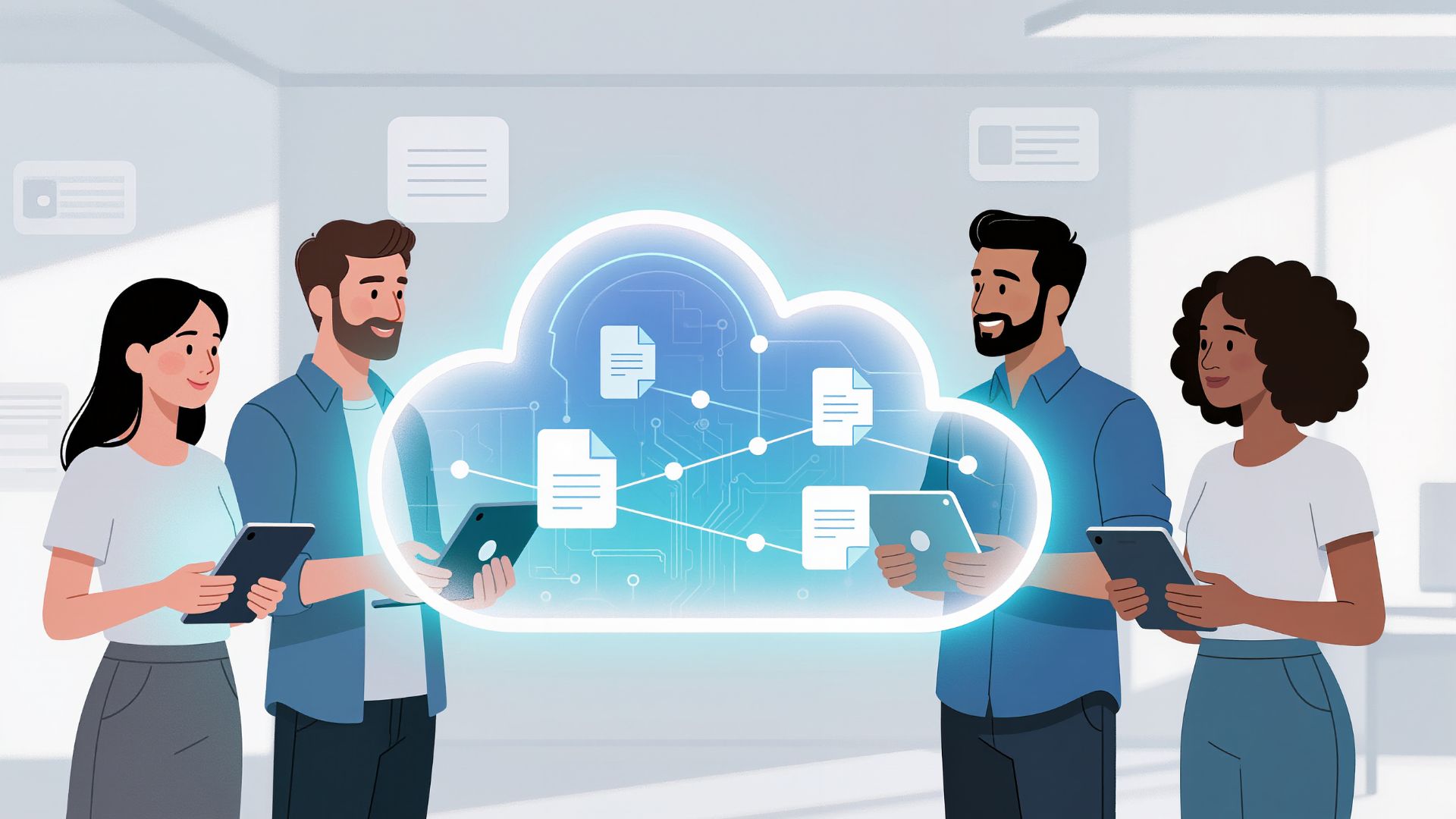Share this:
Visual One Intelligence® simplifies the complexities of chargebacks and showbacks for IT managers. Click below to learn more about chargeback / showback and how we can help:
- How chargeback and showback works
- The pros and cons of chargebacks and showbacks
- Common storage chargeback problems & how to avoid them
- How Visual One Intelligence® helps you run flawless chargebacks / showbacks
Chargeback vs. Showback: How do they Work?
Chargebacks and showbacks both provide department-level accountability for technology usage and costs, but they go about it in different ways. While they both generate statements with the same data, expenses, and consumption, only chargebacks require payment directly from departments themselves.
How Showbacks Work
Showbacks work by preparing a document (similar to a billing statement) that shows the cost of technology usage (such as a storage array or a software license). This document is typically shared with the department using the technology, but the department is not expected to pay for it through their budget.
Instead of drawing from individual budgets, showbacks are intended to help leaders and team members understand the financial footprint their department is leaving. If the department is actively using all the technology in the showback, they can confidently support the value of the investment. But if they are not (maybe they have extra licenses or are not using all the storage they request), they hopefully feel incentivized to correct misaligned usage.
How Chargebacks Work
Chargebacks work by notifying departments of the costs of their technology usage and simultaneously requiring payment. Often, this payment occurs automatically as a budget deduction.
With chargebacks, each department is responsible for its own IT budget. As a result, leaders feel significant pressure to use resources efficiently and only ask for what they need. This differs from showbacks, which are not enforced and often lack a system for ensuring that departments maintain resource utilization as efficiently as possible.
What are the Strategic Differences?
Although chargebacks may seem more effective at driving down costs, they carry significant risks that might cancel out their efficacy.
Making departments pay for their own IT costs often causes some hard feelings among leaders, many of whom are already in a budget crunch. And since technology is necessary for every employee, some leaders might view chargebacks as similar to making departments pay for their own light bills or water coolers – costs traditionally covered by general organizational operating expenses.
Showbacks, on the other hand, reduce friction between executives, IT teams, and operations departments by not interfering with budgets. This is one reason why showbacks are sometimes used as an intermediary step for companies who do not need immediate cost reductions but wish to implement chargebacks through a gradual and employee-conscious change management process.
Weighing the Pros and Cons of Chargebacks vs. Showbacks
Now that you have a general understanding of the distinctions between chargebacks and showbacks, you’ll want to compare them at a more technical level in light of your organization’s abilities and goals.
Ask yourself why you want to implement a chargeback or showback policy. What are your primary business goals? Are there technical or resource-driven limitations to your ability to implement a chargeback or showback policy?
Executives and IT leaders need to work together to answer these questions. As you do, consider some of the following benefits and drawbacks to each option.
Chargeback Benefits
- Captures many benefits of a showback-only approach.
- Promotes total accountability by financially incentivizing business end users.
- Nudges adoption or discontinuation of services through strategic pricing.
- Allows IT to collect payment and recover costs across multiple departments or agencies.
Showback Benefits
- Does not change existing financial systems.
- Does not require true-ups.
- Can be implemented quickly by more visibility software.
- Exposes end users the business impact of their IT usage.
- Demonstrates the value of IT spending by tying it to business capabilities.
- Carries less severe consequences when an error occurs.
- Allows fine-tuning of cost distributions and allocations.
Chargeback Drawbacks
- Interacts with existing financial systems, creating implementation complications.
- Risks failure or abandonment unless there is sufficient planning and strong leadership support.
- Carries more likelihood of making mistakes.
- Requires a true-up on a monthly or yearly basis.
- Increases the likelihood of disagreement over the equitability of cost distribution and allocations.
Showback Drawbacks
- Lacks enforcement mechanisms.
- Cannot collect payments or recover costs.
- Relies on education, process revisions, reinforcement, and socialization to accomplish objectives.
In our own experience working with clients, showbacks tend to be the best initial step for many organizations. This includes businesses that have no prior experience generating a bill of IT, need a low-effort setup, want to avoid dramatic process changes or accounting software integrations, or do not want to absorb the risks of errors.
Even companies that want to use chargebacks in the long-term often see more success by starting with showbacks. Their reduced complexity lets organizations start sooner and fine-tune over time, building up to an easier chargeback implementation process.
Still, both are valuable options, and more and more businesses are optimizing IT costs through them.

Learn How Visual One Intelligence® Helps with Storage Chargeback & Showback
What are the Most Common Storage Chargeback & Showback Problems?
On the surface, chargeback and showback programs seem like they should be relatively straightforward. Whether charging departments directly for their IT usage (chargebacks) or simply showing them how they are using IT resources (showbacks), the goal is to itemize IT costs for each departmental business unit.
Sound simple?
If you have ever been involved with planning chargeback or showback policies, you know they can be anything but simple – especially chargebacks. Here are four of the most common storage chargeback problems that teams face, along with some tried-and-true ideas for each.
Problem #1: You don’t know where to assign costs.
One of the first requirements for any chargeback (or showback) policy is knowing which business unit should receive each cost. Are some departments co-opted into a larger department’s budget? Are there similar teams with nonetheless distinct roles that should be segmented as separate business units?
Assigning costs to business units is not as clear-cut as looking at an organizational chart.
Breaking costs down by too few business units can muddle the data (and payment process). For example, assigning storage costs to a department which are incurred by separate teams within that department can quickly create storage chargeback problems.
On the other hand, using too many business units can become operationally unwieldy, especially if some of those teams are sharing storage. It can also result in frequently re-naming or re-categorizing your business units, which can be an inconvenience.
Don’t make these decisions on your own. Work with C-Suite executives to ensure that costs are assigned in units that accomplish their goals and use practical business unit groupings. Communicate with these decision-makers so their goals are not left unspoken. With a little coordination, you can avoid guessing games and frustration.
At the end of the day, you may still need to adjust your assignment categories occasionally. No problem! It’s important to use unambiguous naming conventions so that business units are clearly identified. When you use Visual One Intelligence® for your chargeback data collection, you can easily adjust your assignments and naming conventions in a matter of seconds whenever you need.
Problem #2: You don’t know how to assign storage costs (ie: your reports look inaccurate).
As you start running chargeback (or showback) reports, you may start noticing numbers you didn’t expect. That’s because when it comes to storage, attributing costs gets complicated quickly.
There’s no single “right” way to attribute costs, but you need to make explicit decisions early in the process and apply those decisions consistently. If your team is not clear up-front about how to attribute costs, they will end up calculated inconsistently. This harms not only the usefulness of the data but also the fairness of the entire chargeback model.
Here are a few key questions that may help you assign costs and avoid storage chargeback problems:
- Will you charge based on storage allocation or storage usage?
- How will you account for the full costs of a storage platform (not just the platform’s usable storage)?
- Will you include ancillary storage costs or only charge for the storage space?
- Will you charge differently for different storage tiers / speeds?
Problem #3: You have duplicated or missed charges.
Sometimes, one LUN will be mapped to more than one host. This can result in charges being duplicated or missed.
It’s important to sort out any host-LUN mapping issues before implementing chargebacks (or showbacks). Visual One Intelligence® can do this for you by automatically eliminating duplicate counting.
Problem #4: Your data collection process is tedious.
Far too often, organizations abandon chargeback or showback efforts because there is too much manual effort involved. Even some products that allegedly simplify the process end up requiring too much manual effort from staff, creating new storage chargeback problems for teams.
Visual One Intelligence® is different, providing chargeback and showback insights without manual efforts or complexity.
We make business unit assignment simple and automate data collection, business unit reporting, and business unit forecasting – all with no human intervention!
Detailed analytics are available on demand through a client portal and downloadable as PDFs or spreadsheets, including:
- Reports by array by business application (ie: how much of each array business units are taking up).
- Reports by business unit by array (ie: per business unit, where and how much storage is used on each array).
- Chargeback reports (showing the cost associated with each business unit as assigned to each array).
- Forecast models (showing the projected storage usage based on each business unit’s historical usage).
Using Visual One, infrastructure teams can discern things like how much storage space each business unit is consuming, who is contributing to storage consumption growth, and whether the right storage is being used by each business unit.
How Visual One Intelligence® Helps with Chargeback & Showback
It should be no surprise: chargeback and showback policies are multi-faceted and take a long time to implement. Even if your organization is not yet officially adopting a chargeback or showback policy, the time to start preparing is now.
As these models become more popular, it will be up to IT departments like yours to be ready to implement them if or when your organization makes a change. When that happens, you’ll want to have the best tools at your disposal.
Seeking more guidance along the chargeback / showback journey? Visual One Intelligence® helps enterprise organizations begin (or course-correct) their chargeback and showback policies. Our business unit reporting capabilities – along with personalized expert attention and more than a dozen other customizable reporting features – centralize infrastructure data onto a single pane of glass so that IT teams have the time and data they need to accomplish what they want.
Join us for a live demo – we’ll show you everything Visual One Intelligence® can do, including how it can help make storage chargebacks / showbacks a reality in your organization.








